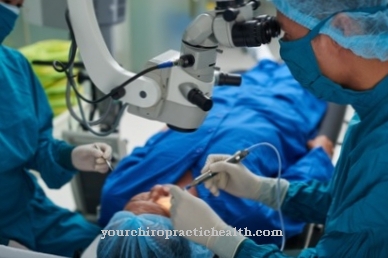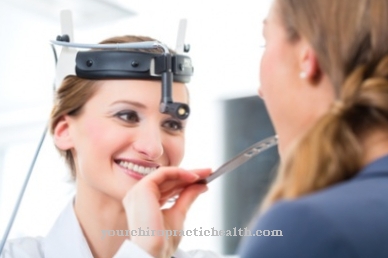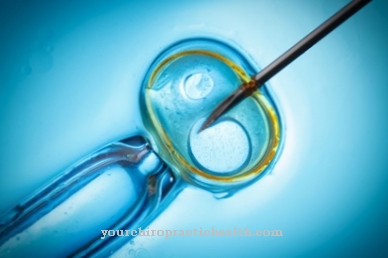Water is a medium that people have always been enthusiastic about, regardless of whether they are used for swimming in their free time or specifically to maintain health and fitness. Aqua aerobics is many centuries old. The Greeks used water to reduce fever. Other cultures also attributed healing properties to the medium.
What is aqua aerobics?

Water aerobics is a special movement training with gymnastic exercises in chest-high, warmed water that many swimming pools offer. The modern form of classic water aerobics is called aquafitness and trains the whole body with the support of the properties of water.
In contrast to classic water aerobics, aquafitness guarantees the participant a lot of fun. Courses offered such as Aquastepp, Aquajogging and others take place in swimming pools at water temperatures between 27 degrees Celsius and 35 degrees Celsius. The aim of the exercises is to train stamina, joints, muscles and tendons.
Although exercises are easier to perform in the dry than in water, water aerobics more than outweighs this disadvantage with many advantages. The exercises can be performed in the swimming pool or by excellent swimmers in the lake or sea. The latter is a challenge in terms of ability and coordination skills. Ideally, beginners are content with the swimming pool.
Function, effect & goals
Water aerobics is suitable for almost everyone. Children and people who are not able to swim independently do the gymnastics in the non-swimmer pool. Water aerobics is an excellent way of returning to sports for people who have refused any sporting activity for many years and have changed their minds for health reasons.
In addition, water aerobics is suitable for babies, whose sense of balance and coordination of eyes and hands can be trained in this way. Since many exercises put little strain on the human body, they are suitable for the elderly and people with joint diseases. Healthy people are able to increase fitness. Furthermore, they use water aerobics to prevent many diseases of civilization such as cardiovascular diseases and obesity.
Obese people are able to shed pounds with proper aqua aerobics (aqua aerobics can burn up to 400 calories in half an hour). Exercising in water is easy on the joints, as a person's body weight is around 80 percent lower than in dry conditions. This significantly relieves the muscles and bones.
However, aqua aerobics can be divided into conditional aqua aerobics in leisure time under the guidance of a trainer and functional aqua aerobics, which serves therapeutic purposes. The former form of water aerobics requires a period of getting used to, after a certain time the exercises can be carried out independently. In this way, endurance, fitness, strength, coordination and flexibility as well as all muscles in the arms, legs, stomach and neck can be trained.
Functional aqua aerobics takes place exclusively under the guidance of an experienced therapist and is usually used to restore the musculoskeletal system through slow movements in a circle. In contrast to functional water aerobics, conditional water aerobics specifically uses the buoyancy in the water and the water resistance in order to achieve optimal results. Basically: Conditional aqua aerobics strains the organism more than functional aqua aerobics and is mainly aimed at recreational and health athletes.
In conditional aqua aerobics, various aids such as swimming boards, pool noodles and special belts are used to achieve the best possible training result. A special belt can increase or decrease buoyancy in the water.
To strengthen the lateral back muscles, the participant grabs a pool noodle behind his back at both ends, presses it together firmly, then loosens the grip. Ideally, arms and shoulders rest on the noodle and the body lies stretched out on the surface of the water. During the exercise, he turns his hips alternately to the left and right. It is important to adapt the aqua aerobics exercises to the individual needs of the course participant. In addition, warming up on the edge of the pool is mandatory before training, as exercises in the water do not rule out injuries. Stretching muscles and tendons after training is also a must.
You can find your medication here
➔ Medicines against tension and muscle painRisks, side effects & dangers
Conditional aqua aerobics is generally suitable for people with cardiovascular diseases. Prior consultation with the treating doctor is a prerequisite. It is not suitable for people with heart failure, severe cardiac arrhythmias or high blood pressure.
In addition, it is best to avoid this type of exercise for people with chest pain that extends into the left arm (angina pectoris attacks). Training in water is not recommended for people with open wounds.
The participants complete a holistic training with conditional aqua aerobics. You strengthen your entire musculoskeletal system and train your cardiovascular system. In addition, the exercises train the sense of balance and stimulate concentration. Basically, the training effect is much higher than with comparable exercises in the dry. In many cases, pregnant women benefit from water aerobics in the conditional form. The exercises relax and relieve your body. The buoyancy of the water relieves the joints, the intervertebral discs and the core muscles and helps with weight problems that arise due to the higher weight during pregnancy. Individually coordinated exercises in the water are less strenuous for pregnant women than exercises on land, they strengthen their muscles and stimulate their circulation.
They also provide the pregnant woman and the baby better with oxygen. The vein backflow can be stimulated by the exercises, which reduces the likelihood of varicose veins developing. Cramps during pregnancy are released, the pelvic floor and uterus give the baby more space because the exercises soften them. Conclusion: aqua aerobics offers pregnant women just as much help as pregnancy exercises, if not a bigger one.
























.jpg)



